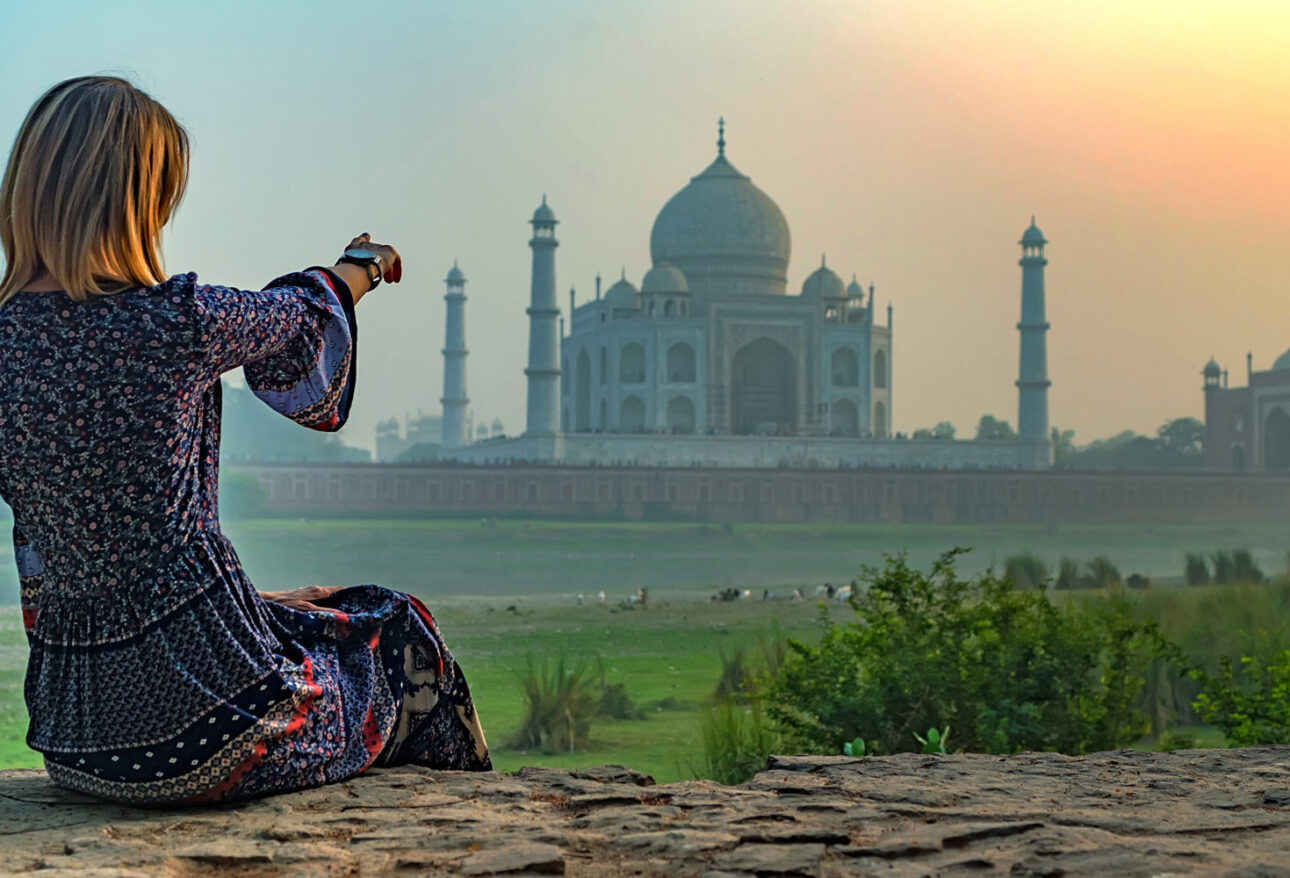The Taj Mahal in India, one of the winners of the New 7 Wonders of the World initiative (2000-2007), is a perfect white marble mausoleum with a tragic love story behind it. This Mughal era building is an example of perfection in architecture with near 100% symmetry dedicated to the most favored wife of emperor Shah Jahan. This pinnacle of architecture and design was listed as a UNESCO World Heritage site in 1983 as “the jewel of Muslim art in India,” which is fitting.
History of Taj Mahal
Shah Jahan (literally translated into “the king of the world”), the Mughal emperor from 1628 to 1658, ordered the Taj Mahal’s construction for his deceased wife in 1631. His wife, Mumtaz Mahal, was the second woman he married and was his favorite wife, who died while giving birth to his 14th child, Gauhara Begum.
Overcome by the sadness of this loss, he ordered the construction of this glorious building to show his dedication and love to Mumtaz Mahal. Constructions began in early 1632 and lasted for nearly 20 years. Although the building was constructed after merely 10 years, it was far from the perfect image that the emperor had imagined.
The 20,000 workers and artisans continued their work to create the most beautiful decorations and form in this structure. The hard work was directed by Ustad Ahmad Lahauri, the Indian-Persian court architect of the emperor himself, until completion.
The Perfection of Taj Mahal and its Nearly Perfect Symmetry
The mausoleum took about two decades to complete after the death and burial of Mumtaz Mahal. The first parts of the 42-acre (17-hectare) complex to be completed were the Charbagh or the gardens around the structure. The Charbagh, an ancient Persian design, showed perfect symmetry in the gardens and their irrigation system. They also reflected the gardens of heaven.

20 Years of Building
After the gardens, the main tomb was built, and later on, four minarets were erected. Later on, a mosque was built on the Taj Mahal’s western side to serve as a place to worship God. To keep symmetry, a symbolic building was also built like the mosque on the eastern side. Although it has the appearance of a functioning mosque like the four minarets of the primary structure, it could not be used as it was facing away from Qibla.
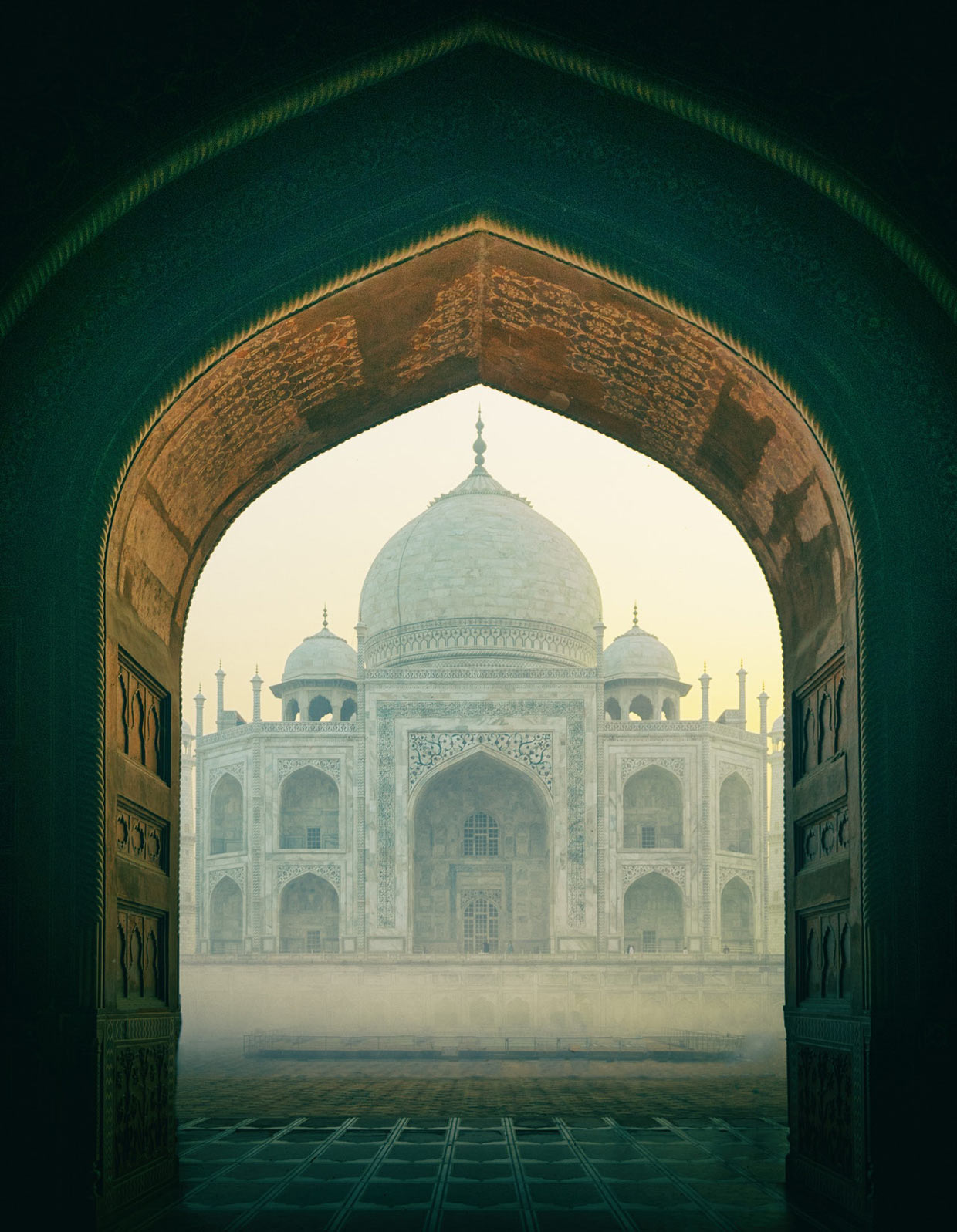
The Practice Before Taj Mahal
The magnificence and perfection of design in this construction are due to its almost 20 years of construction and previous mausoleums’ practices. The structure was evolved as it was built, but before that, because of Mughals’ love for large and tall tombs, they had perfected their design in the Taj Mahal. For example, the emperor Akbar’s tomb was a previous mausoleum built-in 1605 that was nearly perfect but nothing like this wondrous complex.
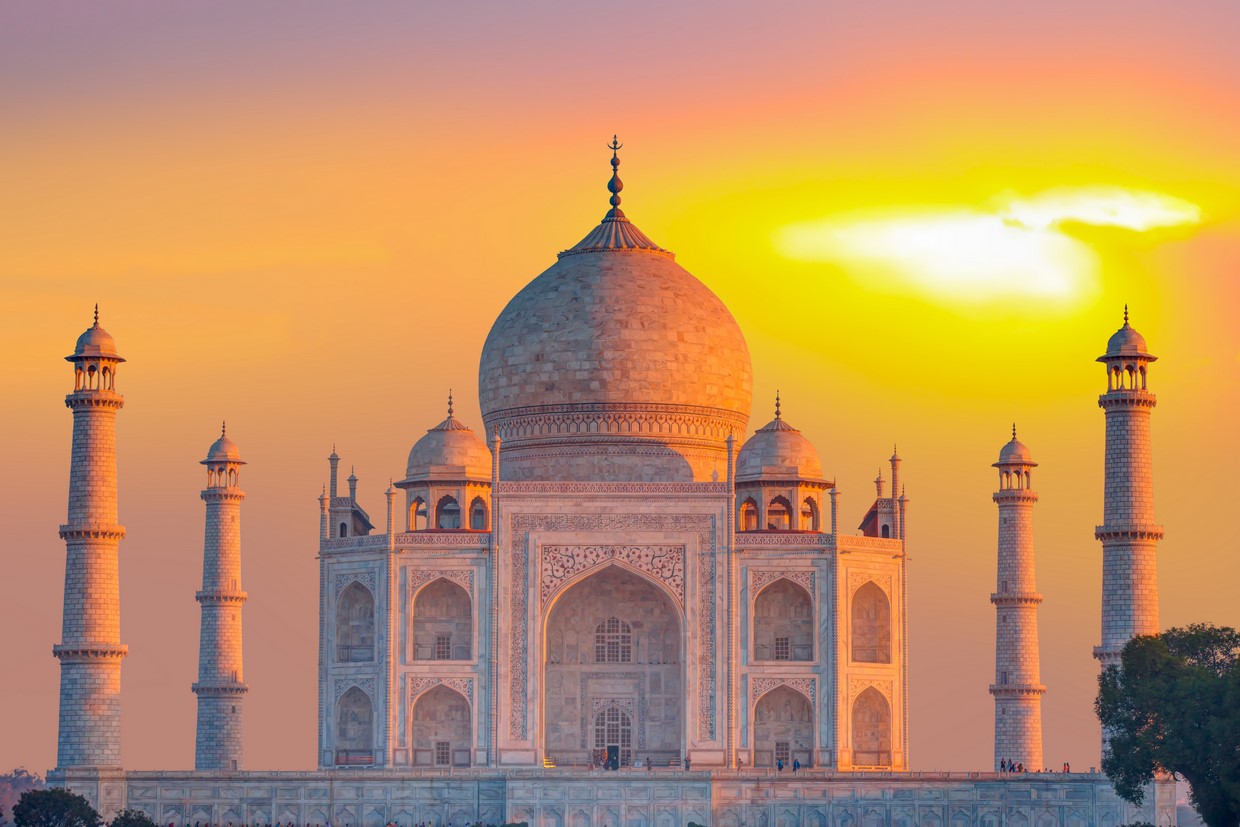
The Almost Perfect Symmetry of Taj Mahal
This pinnacle of design that uses Moghul architecture along with elements of the Indian, Islamic, and Persian styles uses symmetry in all of its areas except one place: the tomb. The original plan of this monument was a total symmetrical building but, there was an alteration at the death of Shah Jahan.
It was supposedly a dedication to the emperor’s love to house only his beloved wife, but after his death, he was also buried there. When entering the tomb in the central room, the centerpiece is the final resting place of Mumtaz Mahal. To reunite the two lovers after death, Shah Jahan was buried next to her, breaking the Taj Mahal’s perfect symmetry.
The Rumors Behind Taj Mahal
You may come across several stories told by some locals that are not based upon any facts or evidence. Some may sound convincing even though there are no proofs to prove them, and some of them seem as untrue as they sound, like the myth that this complex is the work of famous Italian or European architects.
The Myth of Black Taj Mahal
Many people believed that Shah Jahan planned to build a second mausoleum across the Yamuna River that looked just like the original tomb. This second building was to mirror the first mausoleum only in black marble to house the emperor’s remains. There might be some truth to this story, but there is nothing to prove it with certainty.
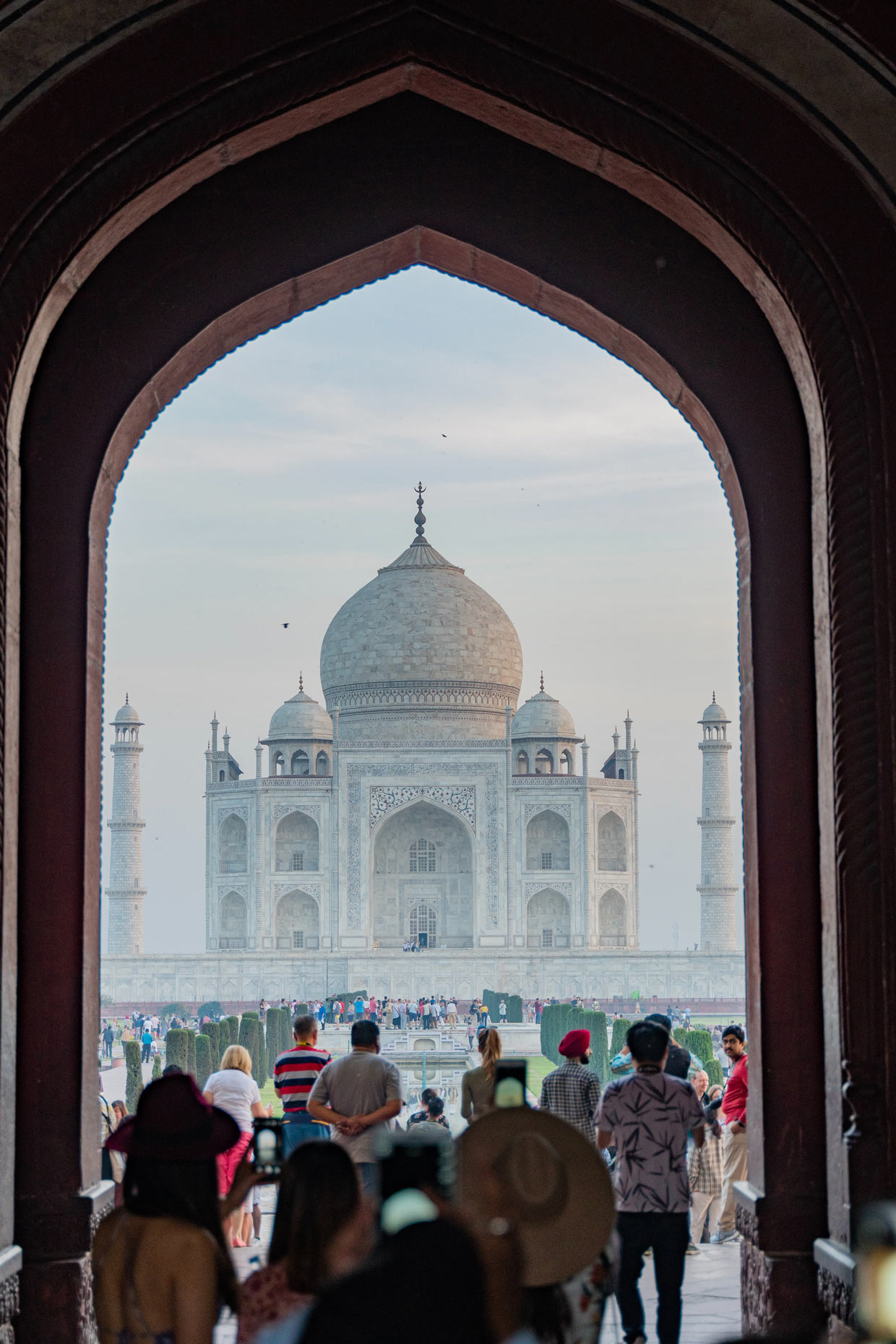
The Gruesome Myth of taj Mahal
Another story that is told by many locals is that the craftsmen and designers of this fantastic building were mutilated and blinded. This terrible fate has befallen these men only to prevent them from building anything more wonderful and delicate. The same story may be heard about many other buildings over the world. Whether this has ever happened anywhere in the world or not, it did not happen here as there is no evidence to prove it.
The Story of Imprisonment of Shah Jahan
This tale may actually be true that Shah Jahan was imprisoned by his son. Before he died, the emperor was imprisoned inside Agra Fort. Ironically, the son who imprisoned him was the 14th child of Mumtaz Mahal, who imprisoned his father in a place where he could look upon the Taj Mahal.
This imprisonment happened in 1658, which was the final year of Shah Jahan’s reign. It is also believed that this event prevented the construction of the tomb’s black marble mirror on the opposite side.
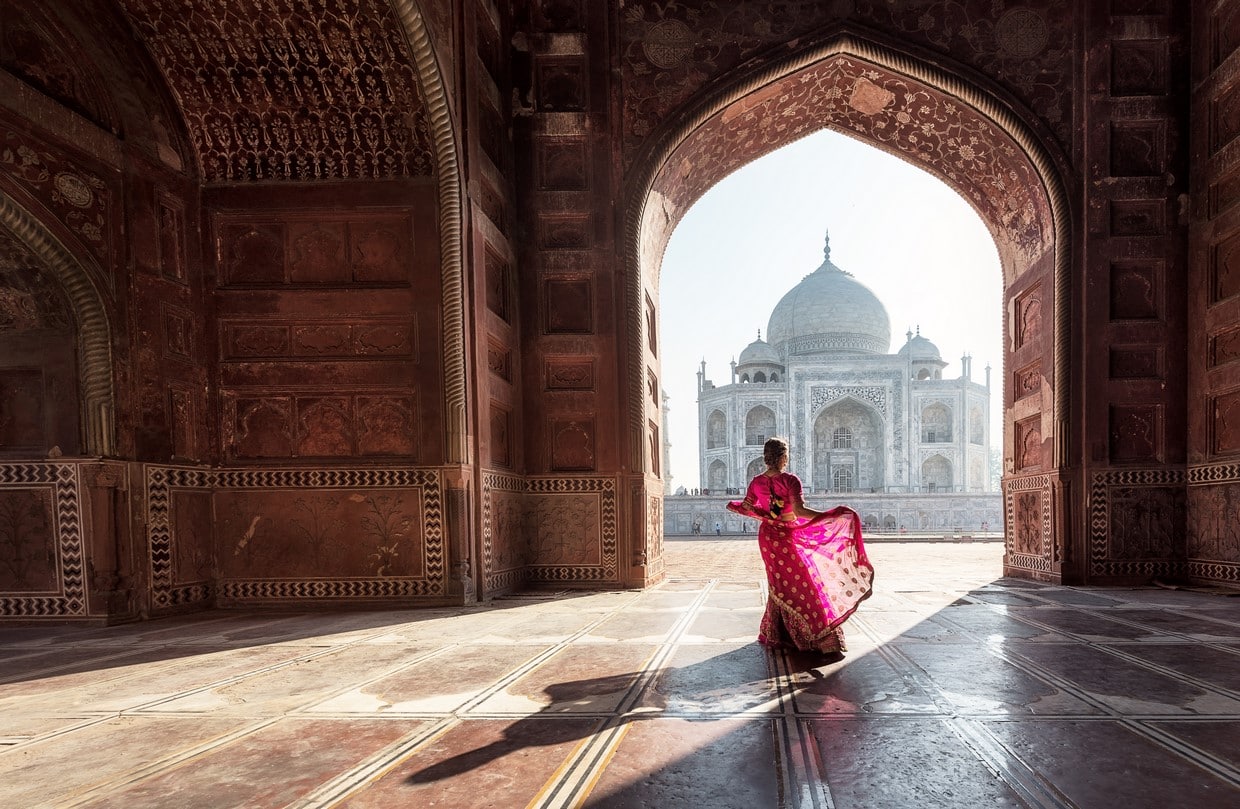
The Final Resting Place of Mumtaz Mahal and Shah Jahan at Taj Mahal
When visiting the main structure, you should enter the center room to see the emperor and his wife’s two sarcophagi. With all of their glory and beautiful designs, they are actually both empty! They are buried several feet below this room at the ground level or garden level of the complex. The room of the original tomb of this couple can be entered; however, it has been seal shut from the public from the time of their deaths.
Taj Mahal, the Symbol of Love and an Icon of Power!
The building was by no doubt dedicated to love, of that there is no doubt because the Shah Jahan grieved his loss for years. But the building was also a display of the power of the Moghul Empire. The reason is that they brought the best of artists and designs from all across the lands they have conquered. The result of these efforts is a perfect design with elements from several countries. By today’s accounts, it cost nearly one billion U.S dollars to construct!
Architecture and Construction of Taj Mahal
The building has a central dome with a height of 73 meters (240 feet) with four smaller domes surrounding it. Four minarets are built outwards from the building to fall away from the masterpiece in case of any natural disasters. Last but not least, there are several arched entrances with verses of the Quran.
Inside, there is an octagonal chamber with two empty sarcophagi, one in the middle belonging to Mumtaz Mahal, and the other to the side, belonging to the emperor. This room, like the rest of the Taj Mahal, is decorated and holds the most delicate of carvings in the complex.
The exterior shines with the white of the marbles, and as you go nearer, you see that it is also decorated with precious gems. Another beautiful aspect is the calligraphy that seems uniform but actually grows in size as it goes up the entrances.
There are also three main gates to the south, east, and west, which will allow entry to the complex.
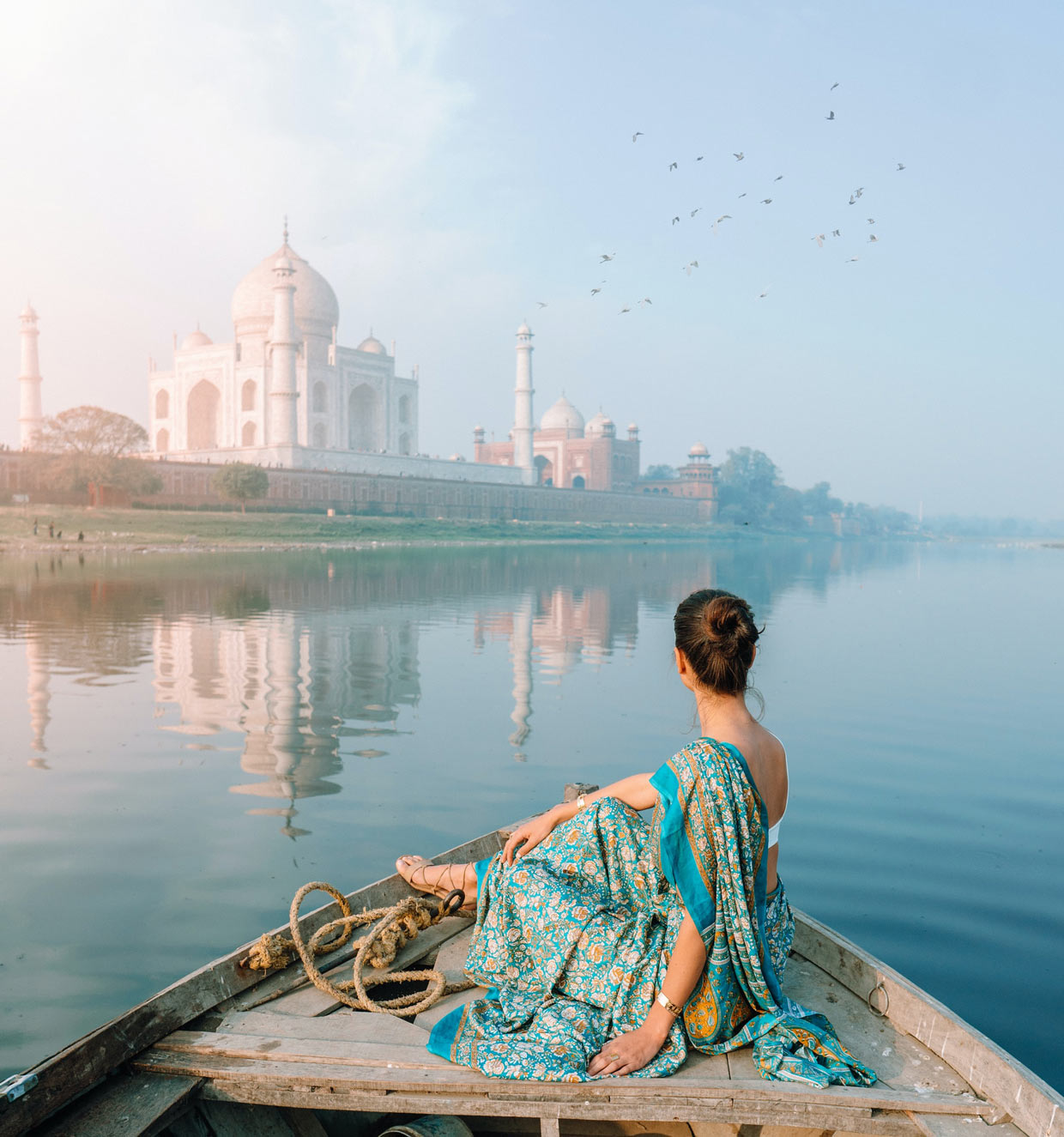
The Pietra Dura (Inlay Work) of Taj Mahal
One of the most prominent parts of the decorations is the stunning Inlay work with precious stones. You will only see their elegance as you get closer and pay attention to the details. These patterns with their motifs are repeated in most of the buildings, especially in the tomb chamber.
Material and Labor for Taj Mahal
The working labor of about 20,000 workers and the material was chosen from all the empire’s sides. Other than the men, elephants were used to bring the material from all across Asia. The foundations of such a magnificent structure also had to be reinforced. Therefore, the entire area was excavated and filled to reduce seepage.
The scaffolds were also not the usual bamboo or wooden supports for ordinary buildings. These supports were built with bricks that would also take time to establish and dismantle.
All of these in this massive complex resulted in Mughal architecture’s finest example, which is a mix of local Indian, Islamic, and Persian styles.
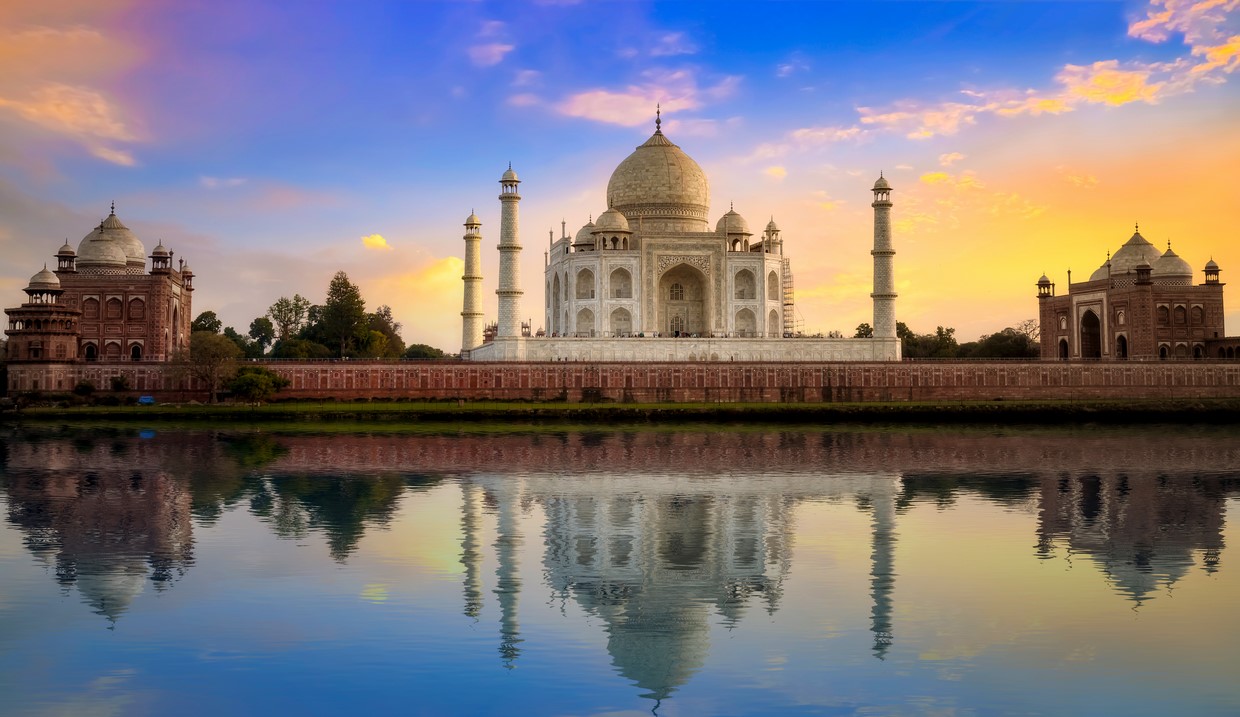
Renovations of Taj Mahal
Fortunately, the complex was mostly held together and undamaged by wars and conflicts. During WW II and other conflicts, the structures were hidden and covered so they would not be bombarded. It remained out of harm’s way during the rest of its age as other buildings suffered destruction.
Most damages were due to lack of maintenance from time to time and pollution. This problem was solved in the late 19th century and early 20th century by using clay! The British viceroy Lord Curzon ordered the building to be cleaned and the yellow to be wiped from the white marbles. This task was accomplished by applying an old method of covering the dirty areas with a special kind of clay that absorbed the pollution into a building.
To prevent such problems, factories and car traffic was banned from the nearby areas so the pollution would not damage the building again.
Tourist Guide
When you plan your trip to this particular place in India, you must consider certain things. For example, each entrance is known for the places they are closer to, like cheaper or more expensive hotels. Other than your accommodations, you must decide on when to visit and how long to stay:
[wpsm_colortable color=”main-color”]
| Travel Guide | |
|---|---|
| Address | Dharmapuri, Forest Colony, Tajganj, Agra, Uttar Pradesh 282001, India (Get Direction) |
| Opening Hours | |
| Morning Visit | Sunrise to Sunset |
| Night Visit | Usually from 20:00 until 00:00 |
| Entrance Fee | |
| Adult Foreigners | 1100 rupees + 200 rupees for the mausoleum |
| Citizens of SAARC and BIMSTEC Countries | 540 rupees + 200 rupees for the mausoleum |
| Locals | 50 rupees + 200 rupees for the mausoleum |
| Children Below the Age of 15 | Free |
| Adult Foreigners Night Visit | 750 rupees |
| Adult Locals Night Visit | 520 rupees |
| Children Below the Age of 15 Night Visit | 500 rupees (both local and foreigner) |
[/wpsm_colortable]
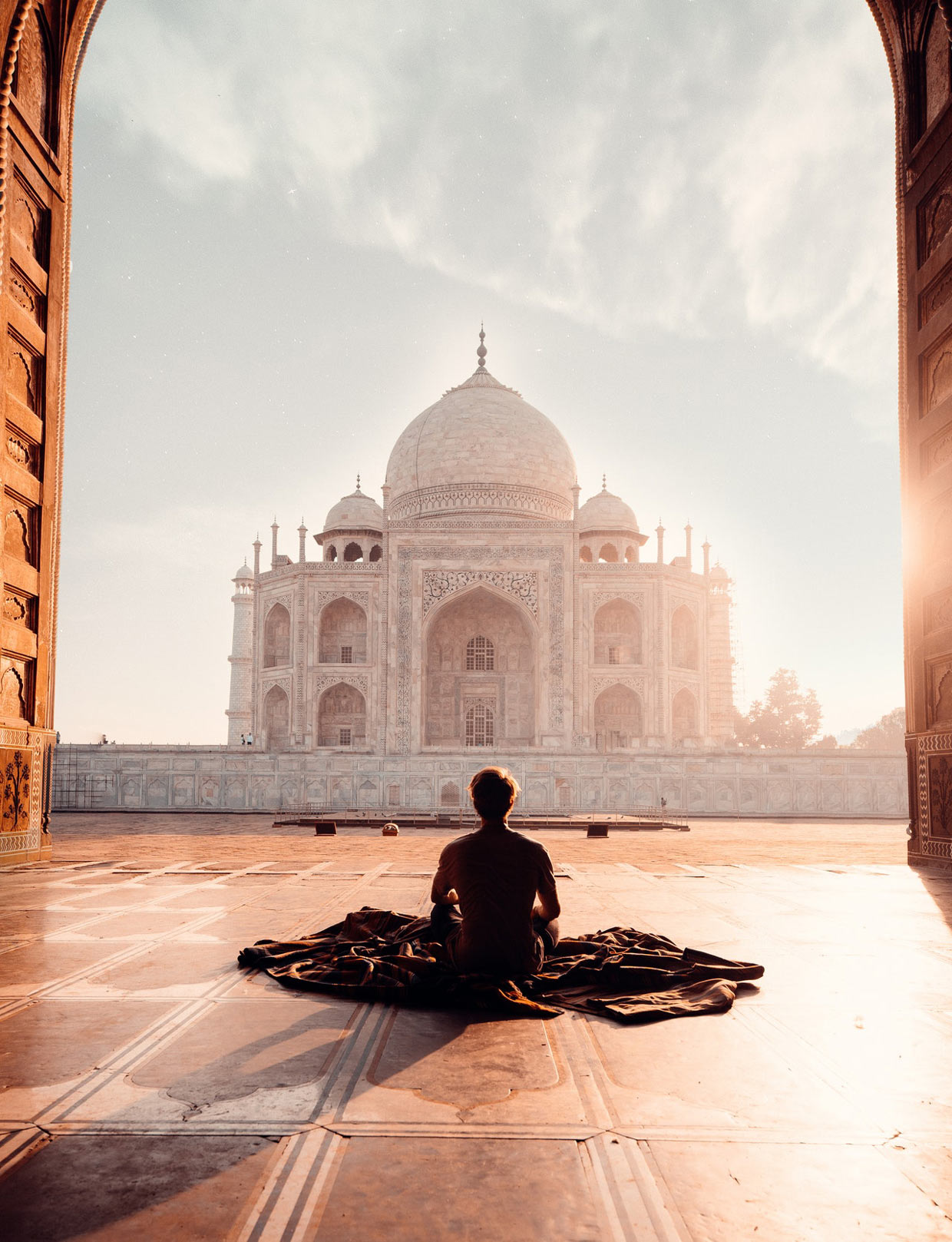
Location
First of all, you should get to Agra, Uttar Pradesh. You will have to arrive in Agra via bus or train and head to the Taj Mahal on foot for most of the way. The trains will take about 3 hours to get you from Delhi to Agra and will cost about 415 rupees for a one-way trip. For a round trip, you will have to pay an extra 250 rupees.
The buses are a little more expensive, but they depart more regularly. They will cost about 700 rupees and will depart from the New Delhi terminal called Anand Vihar terminal.
You can always get to Agra from other cities, but the best way to get there is from Delhi. Some of the other cities also have train access as well as regular buses.
How Long to Stay & Explore
If you are on a schedule, you can just visit the mausoleum and head back. If you have more time, you will need at least three hours to visit all the sections. Our recommendation is to go inside when the gates open and leave when they close the site to enjoy this visit fully.
Opening Hours of Western and Eastern Gates: Half an hour before sunrise, until half an hour before sunset.
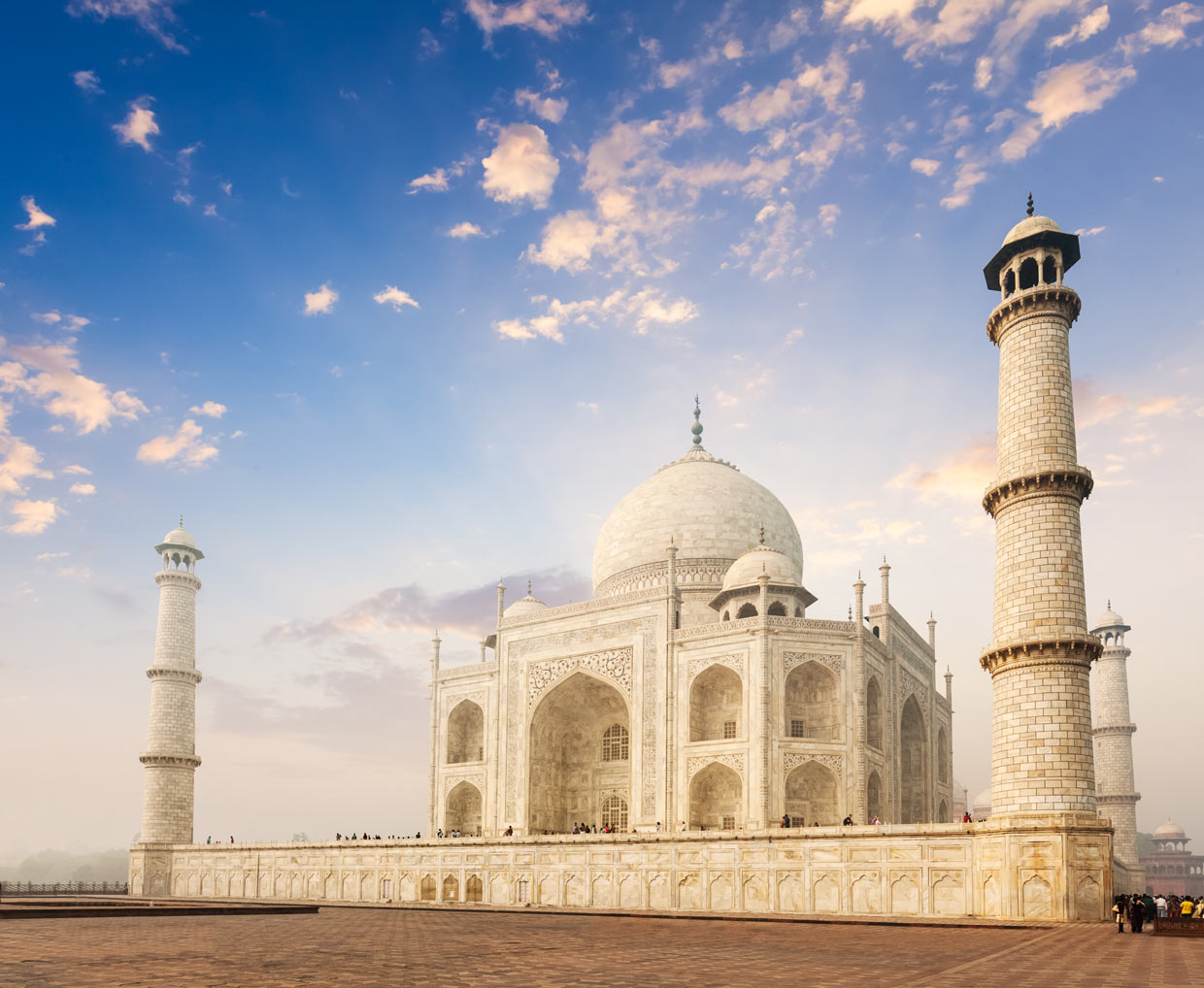
Notes
- The visiting hours are not fixed, but you can assume they are from 06:00 – 18:00 in spring and summer, and 06:00 – 17:00 in autumn and winter.
- The Taj Mahal is closed on Friday because of prayers. The site is also closed during religious events.
- The southern gate is not for entering currently and serves only as an exit.
- Night Visiting (after sunset) must be booked in advance and preferably booked online. The night visit will usually be from 20:30 to 00:30.
Entry Prices & Entrances
The east gate is closer to most of the top hotels and places where tourists usually reside. The lines at this gate are usually shorter, but it is still recommended to arrive before sunrise. The ticket office is a little away from the gate (about 10 minutes walk) in Shilpgram.
The west gate is mostly used by the locals as there are fewer hotels near this section. It is the main gate of the complex; therefore, you must arrive before sunrise to avoid long lines if you want to enter from here.
Where to Stay?
If you are traveling on your own and want to visit the Taj Mahal, you have two options. The hotels near the east gate, as mentioned earlier, are better suited for tourists. If you are a budget traveler, you can stay at the hotels near the other two gates, which are cheaper. If your hotel is near the southern gate, keep in mind that you cannot enter from that gate.
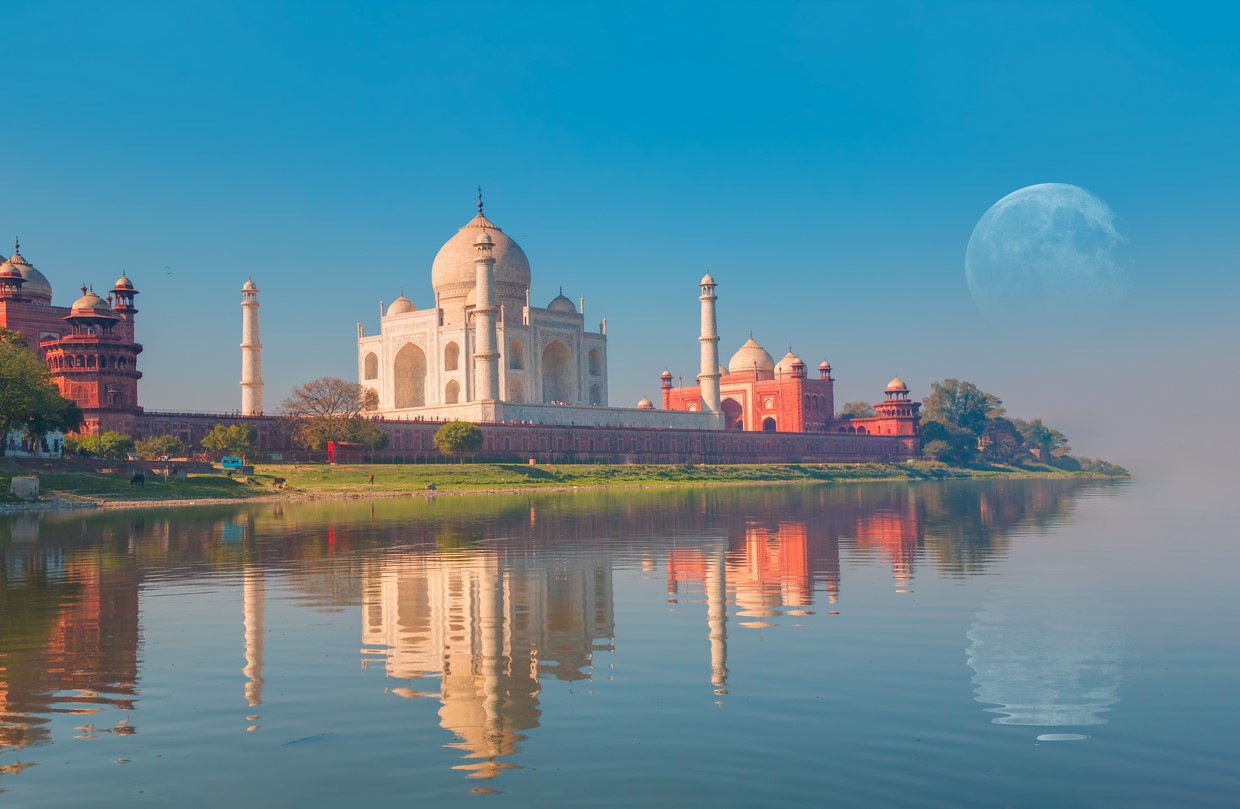
Rules of Visiting Taj Mahal
- The Taj Mahal is a sacred and active religious site; therefore, you must wear appropriate clothing. Wear something to cover all of your arms and legs.
- Eating, drinking, and smoking are not allowed.
- Most electronic gadgets are prohibited inside the site.
- Photography with a camera and without a permit is not allowed.
- Switch off your phone or put them on silent mode to avoid making noise.
- Do not litter the site of the complex and refrain from scratching and touching the walls and surfaces.
Notes
- You may have a good view of the Taj Mahal from any of the nearby hotels. You can also get an online tour of the complex before entry. Alternatively, you can get a boat and see the Taj Mahal from a distance and in the river. You can also get a good view from across the river.
- The site has audio guides if you need any. You may also get a compass and a map which are government-approved. These guides come with translations into most European languages like English, French, German, Italian, and Spanish.
- The taxies may want to charge extra if you are not careful. Be sure to haggle for a better price.
- Keep in mind that when you take a taxi, they will not take you to the Taj Mahal gates because car traffic is banned due to pollution.
- Avoid large crowds and beggars. If you are a budget traveler and staying in the cheaper places, keep an eye out for scammers.
- It is better to have your guide before going to India and avoid local guides who offer their services as you approach each site. Some unofficial guides might keep pestering you and give you higher prices. If you are not looking for a guide, reject their offers.
- The dates and exact prices can be checked at the official site of Taj Mahal at https://tajmahal.gov.in

